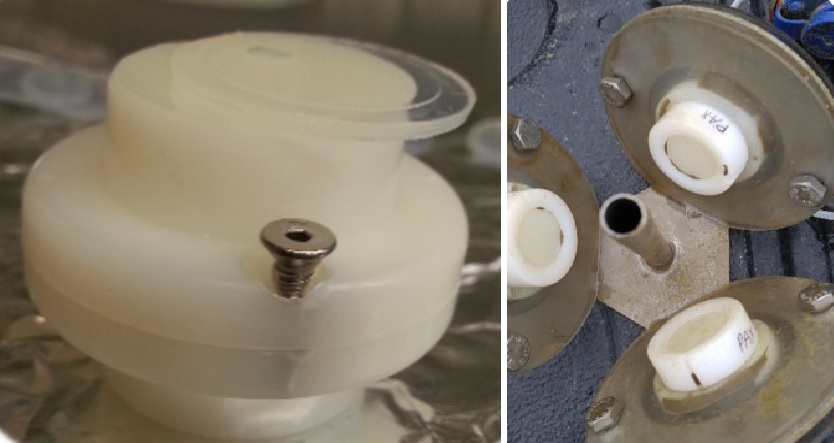New passive sampling approach developed to measure cyanotoxins in freshwater systems

SCCWRP and its partners have shown in a proof-of-concept study that a newer, more experimental form of passive sampling technology known as o-DGT can be used reliably to measure levels of a ubiquitous class of cyanotoxin found in California freshwater systems.
The two-year study, published in July as a SCCWRP technical report, found that o-DGT passive samplers are a cost-effective alternative to traditional grab sampling for measuring multiple types of microcystins.
Not only did researchers show that o-DGT provides an integrated measure of toxin levels over time, but the technology also is able to quantify microcystins better than existing forms of passive sampling, including Solid Phase Adsorption Toxin Tracking (SPATT), which can provide only semi-quantitative estimates.
Water-quality managers are increasingly turning to passive sampling to expand routine cyanotoxin monitoring across California and beyond, underscoring the value of developing multiple types of passive sampling.
Researchers envision the o-DGT method being used as a complement to – or replacement for – SPATT-based passive sampling. SPATT remains one of the easiest, most accessible approaches for cyanotoxin monitoring, especially for capturing qualitative estimates of toxin levels.
Passive samplers are small, simple devices made of inexpensive, commercially available resins or films that are typically deployed for weeks or months at a time to sorb contaminants in the water column. Then, the devices are retrieved and analyzed in a lab.
Cyanotoxins, which are produced by some types of harmful algal blooms (HABs), are becoming more common in California as waters warm; these ecologically disruptive blooms can be deadly to domestic pets and harmful to humans who come into contact with contaminated water.
During the study, which was conducted with the Los Angeles Regional Water Quality Control Board, o-DGT passive sampling devices were deployed for one to three weeks in three L.A.-area lakes, one Northern California lake and one coastal harbor. Researchers were able to estimate the water concentrations of microcystin toxins, even at low levels.
Based on the findings of the o-DGT study, researchers will continue to evaluate the performance of this type of passive sampler.
SCCWRP already has begun examining o-DGT’s ability to measure other types of cyanotoxins, including anatoxin-a, cylindrospermopsin and saxitoxin.
Researchers also are interested in linking o-DGT passive sampling measurements to existing statewide cyanotoxin thresholds that, when exceeded, trigger specific management responses intended to minimize ecological and public-health risks.
o-DGT passive sampling devices, which are made of a thin polymer film, already have been shown to accurately estimate concentrations of other common types of environmental contaminants, including pharmaceuticals and polyfluorinated alkyl substances (PFAS).
Contaminants that adhere to o-DGT devices are measured by taking into account predictable properties of the chemicals that control chemical diffusivity rates.
Consequently, o-DGT sampling rates are much less dependent on flow rate, ionic strength, pH and other environmental factors than SPATT and other more common types of passive sampling. Additionally, once chemicals sorb to o-DGT, the sorption is typically irreversible.
For more information, contact Dr. Bowen Du.
More news related to: Emerging Contaminants, Eutrophication, Harmful Algal Blooms, Top News